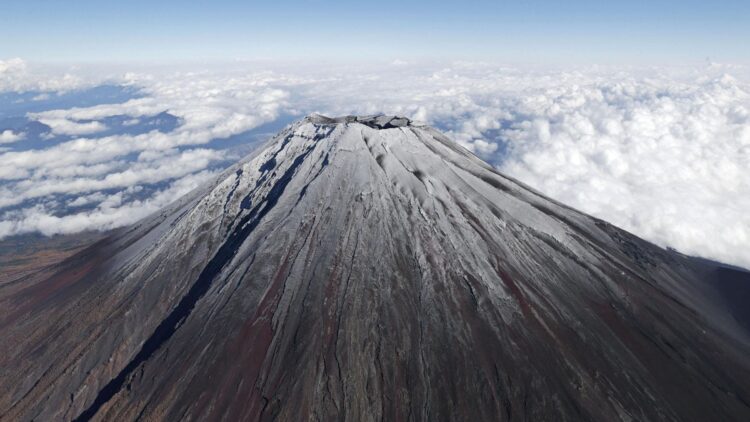Mount Fuji, Japan’s pride and a powerful symbol of culture and landscape, has entered the new year with its snow cap missing, underscoring the worsening climate change. There is no snow in October for the first time in 137 years, all because of the hottest summer Japan has ever seen. This troubling milestone reflects a larger global issue, increasing temperature, and its consequences. The lack of coverage at Mount Fuji’s summit invites action before it is too late.
Mount Fuji’s snowless peak: An unsettling symbol of change
Traditionally, the snow-white top of Mount Fuji symbolized purity and endurance for centuries. However, no white peaks can be observed in the site in 2024, which underscores the deepening effects of global warming. Records have been kept for 130 years; for most of this period, snow fell on Mount Fuji in October. This year, however, due to successive warm weather, the mountain remains stripped even when the season is cool.
Weather specialists have blamed this distortion on what they termed as the hottest summer in Japan. The mean temperature during June-August was 1.76°C above normal, hampering the onset of cold air mass necessary for snowfall. It is the hottest year in recorded history, and this warm temperature is a wake-up call of what human-induced climate change is all about. Global warming and heat waves are changing not only Mount Fuji but also other systems throughout the world.
The snowless Mount Fuji is not an Asian problem but a global message. No snow on the roof of Japan’s symbol means that the rise in global temperature damages natural processes, from ecosystems to water supplies. It is, therefore, a very eye-opening sign that our environment is reaching its tipping point.
A warming planet: Mount Fuji as a reflection of global trends
The current state of Mount Fuji is just an example of a very sad and worrisome tendency worldwide. The world has reached its hottest year in 2024, even higher than in 2023. Between January and the middle of this year, that is, August, temperatures worldwide went high due to greenhouse gases and industries. These have caused heat, cyclones, and severe droughts, which call for fighting climate change.
These increasing temperatures are the main reason Mount Fuji has little or no snow. Global warming and climate change are evident as ice caps melt, the seas rise, and ecosystems are affected, putting at risk animals and people’s ability to survive. These effects are not limited to Japan only, as the food and water chain and economic stability of almost all countries worldwide have been disrupted.
These problems are predicted to worsen if no action is taken in the future by the experts in the field. This means climate change is no longer an eschatological event but a present condition. Landsat 8 images of Mount Fuji’s snowless crown should prompt global unity in reducing emissions and adopting sustainable practices before similar views are marred.
Lessons from Mount Fuji: The path to redemption
The snowless state of Mount Fuji teaches us a powerful lesson: civilization advancement cannot occur at the expense of the ecosystems. Japan is a country with great technological and cultural significance and has the task of becoming a developed and sustainable country. This change is a wake-up call to change how we interact with Earth as we continue exploiting it.
Climate change is an issue that requires a multi-fold approach to its mitigation. The world, including Japan, can set an example by using new energy sources, reducing greenhouse gas generation, and focusing on conservation. There is a need to act together to preserve landmarks such as Mount Fuji and the surrounding environment.
Individuals also play a role. It means that changing the light bulb or recycling the newspaper, saving energy, and supporting environmental programs are changes, too. This should make everyone contribute globally because the environment’s health is directly proportional to our existence as human beings, for instance, in the case of Mount Fuji.
Mount Fuji, depicted as a snowless mountain, is a symbol of climate change, which shows us the negative impact of development on nature. This event has never happened before and can potentially be a wake-up call to persons, governments, and industries across the globe. If humanity has come too far, then it is too far in the direction of progress and away from the environment. It is high time to take action – to save not only the snowy tops of Mount Fuji but also future generations of our planet.

